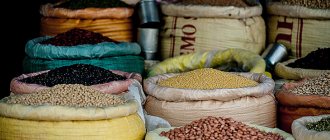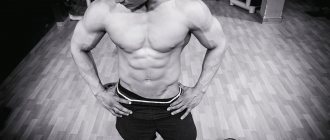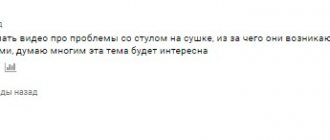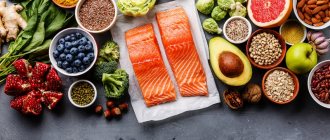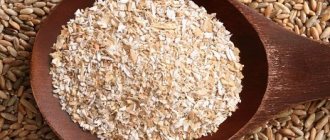The so-called drying is especially popular among modern girls. This is a special type of diet aimed at reducing subcutaneous fat deposits. The peculiarity of this diet is that it works in conjunction with active training. Thanks to this, muscle mass is preserved and increased, and weight is reduced solely by getting rid of fat deposits. Weight loss is stimulated by a carbohydrate deficiency, which is created by a carbohydrate-free diet.
Carbohydrates are a source of energy for our body. With a sedentary lifestyle and a carbohydrate-rich diet, carbohydrates do not have time to be wasted. Unspent carbohydrates turn into fat deposits. If the amount of carbohydrates supplied with food is sharply limited, then the opposite effect will occur: the lack of energy resources will force the body to consume carbohydrates stored in the form of adipose tissue. This is why drying is so effective in getting rid of fat deposits, because this diet involves a sharp restriction of carbohydrates in the diet.
The low-carbohydrate drying diet is widely used among professional bodybuilders and athletes, as it allows you to effectively fight fat deposits without damaging muscles.
Why do you need to give up carbohydrates?
There is an opinion that during drying it is necessary to completely eliminate carbohydrates and give preference exclusively to protein nutrition. In fact, for a highly effective result, you need to reasonably limit carbohydrates, or rather, minimize them (low-carbohydrate diet), but in no case give them up completely. This is due to the fact that carbohydrates are a source of energy; their intake increases endurance and performance. For those who think this theory is wrong, you can conduct a small experiment. Try eating exclusively protein for a few days. As a result, you will notice how quickly fatigue sets in during training, energy and strength disappear, drowsiness appears and decreased performance.
It is enough to completely give up simple carbohydrates, which do not provide any benefits for health or weight loss. Once you exclude them, the body will have nowhere to take energy from; it will have to use existing reserves in the form of fat deposits.
Low-carbohydrate diet: recommendations
A low-carbohydrate diet may be the best approach for losing weight and improving health biomarkers in obese, insulin-resistant, and sedentary people.
A sedentary person does not waste muscle glycogen, so he does not need to worry about replenishing his stores. All you have to do is supply carbohydrates for the brain and central nervous system. Usually 100-125 g of carbohydrates per day is enough (this is not the weight of cereals/vegetables/bread, but the carbohydrates they contain). This has a good effect on mental abilities, overall energy and mood.
You can get this many carbohydrates from virtually unlimited vegetables (except starchy ones), 1-3 servings of fruit, and one fist-sized serving of cooked grains per day.
What happens if a sedentary person eats too many carbohydrates?
- Once liver and muscle glycogen is filled, excess carbohydrates will be stored as fat.
- With chronically elevated blood sugar and insulin levels, the body will not use fat as fuel.
- Any dietary fat will also not be used as an energy source. It will simply be stored in reserves.
How the body works when you give up carbohydrates
With a sharp change in the usual diet, certain chemical reactions occur in the human body. It is worth noting that with carbohydrate-free drying, the calorie content of foods is only a secondary factor. What matters is what you eat. A sharp decrease in carbohydrates leads to the fact that the body has to convert other reserves into energy, in this case they are fat deposits and muscles. Of course, it is easier for the body to get rid of muscle than fat. Muscles are a foreign body for our body and do not bring any benefit. For this reason, in addition to drying, it is necessary to regularly train so that in the process of a kind of weight loss you do not lose muscle mass. In this case, the body begins to process fat reserves.
It is important! Physical activity is important to achieve the desired effect. The training plan is individual for everyone. To compile it, it is recommended to contact specialists.
Low carb diet and strength training
You might think: why not just cut carbs and lose weight without any training? This is quite real. If your goal is simply to reduce your body weight to a healthy one, this option is just the right one. No matter what anyone says, most people are able to lose weight with diet alone, without exercise.
If you lead a sedentary lifestyle and the last time you did physical education was at school or are just starting to exercise regularly now, you should not train like hell, falling into the hands of an ambitious trainer who will start molding you into a fitness bikini competition.
There is a high probability that you will injure yourself because your body is not ready for a heavy load and has not gone through the adaptation period. This gives ratings to various weight loss projects, but rarely works in the real world. Just create a real and manageable calorie deficit, make some food improvements, move more throughout the day, and it will bring results.
But it's a completely different matter if you have higher goals than just losing weight to a healthy level - looking good in a swimsuit, having visible definition and a toned figure. You can’t do this without strength training, because it helps maintain muscle mass during a diet and ensure that a larger percentage of your weight is lost from fat rather than muscle. This is especially important for those who already have a healthy weight, but want to lose even more weight.
Muscles are what give the body its shape; it is the same frame as the skeleton. Therefore, strength training should be the focus of your attention. Diet is the main tool for fat burning, strength training is the main tool for working on muscle growth and preservation. And together they work just fine.
By the way, if you have type II diabetes, prediabetes, or insulin resistance to varying degrees, diet is by far the most effective solution. But research shows that strength training, by improving the ability of muscles to take glucose from the blood, also works great and is recommended by many sports associations specifically to solve this problem.
What foods should you avoid on this diet?
Let us remind you that even when drying, we exclude only fast carbohydrates and minimize the consumption of complex ones. On average, your daily diet should contain about 30 grams of complex carbohydrates. To understand what 30 grams of carbohydrates are, consider the table:
| Product | Amount of carbohydrates per 100 grams |
| Cottage cheese | 2 grams |
| Apple | 5 grams |
| Bread | 50 grams |
| Cucumber | 10 grams |
| Oat groats | 56 grams |
| Milk chocolate | 59 grams |
| Egg | 3 grams |
We can conclude that the maximum amount of carbohydrates is contained in sweet and flour products, for this reason, first of all, you need to give up them. Significantly lower amounts of carbohydrates are observed in chicken eggs and cottage cheese. It is worth noting that fish and dietary meat do not contain carbohydrates at all. Vegetables and fruits contain minimal amounts of carbohydrates.
When following a low-carbohydrate diet, it is recommended to avoid certain types of foods that contribute to the growth of subcutaneous fat. In addition to the ban on sweets and flour, the following should be excluded:
- Any drinks that contain alcohol.
- Products containing excessive starch content. These include not only potatoes, but also corn and legumes.
- Dairy products that contain questionable substances. These include flavoring additives and artificial colors.
- You should not buy ready-made meals. When preparing them, various sauces and flavor enhancers are often added, which are strictly prohibited on a carbohydrate-free diet.
Before you buy any food, be sure to read the ingredients on the package. Try to avoid unnatural products. Various trans fats and chemical additives are harmful not only to the drying process, but also to health.
Low carb diet and strength training
People who use a smart low-carb diet to lose weight see results. Giving up large amounts of carbohydrates, especially processed, refined foods in favor of vegetables, meat, and fruits will bring many benefits to anyone who previously ate a classic Western diet and leads a sedentary lifestyle.
But it is necessary to understand where the benefits of this approach end, and why it stops working for those who are trying to achieve the maximum in terms of figure, muscles, relief, low fat percentage and the like.
Any high-intensity activity (strength training, interval training, sprinting, etc.) creates a unique metabolic environment in the body, a special physiological state where the body begins to process carbohydrates from food differently within 24-72 hours after exercise. If you work out two to four days a week, your body is in recovery mode almost all the time, and your nutritional needs are completely different from those of the average sedentary office worker.
Particularly scrupulous scientists often say that animal research does not always apply to humans. Well, the conclusions drawn from studies on sedentary, obese and insulin-resistant people (and studies are almost always conducted on them, not athletes) do not always apply to healthy, non-overweight and obese people who exercise. strength training.
We can say that from the point of view of food needs these are almost two different species, and parallels cannot be drawn, although they are drawn and only confuse people. As a result, they train hard in the gym, try to grow muscles, but stick to low-carb diets and achieve less results than they could.
Someone who regularly engages in heavy strength training (heavy not so much in terms of weights, but in terms of the effort involved) spends more carbohydrates, and therefore must eat more carbohydrates than a sedentary person.
Fat is the main type of fuel at rest and during low-intensity work (walking, swimming, cardio). Carbohydrates are the primary fuel during high-intensity exercise.
Fat oxidation is a process that unfolds slowly. But during heavy, intense work, energy is needed quickly, so the body “switches gears” and switches to an oxygen-free (anaerobic) method of obtaining energy from muscle glycogen. This reaction unfolds very quickly and gives energy instantly, but we pay for it with rapid fatigue and the inability to maintain the same high intensity for a long time (longer than a minute, for example).
Carbohydrates also play an important role in restoring the body and its energy reserves after exercise. At the cellular level, unique changes occur that determine where nutrients go. After a workout, carbohydrates first go to muscle cells, and this is logical: what was spent is restored first. If you are in a calorie deficit (diet), body fat is used as fuel for the body's other energy needs.
All this boring and overly technical information simply means that when glycogen stores are relatively depleted during training, carbohydrates will be used to replenish glycogen stores before they begin to go into fat stores, and they will not interfere with fat burning in a calorie deficit. You need to eat too many carbohydrates to fill all the glycogen (300-600 grams) and gain calories so that carbohydrates turn into fat.
By the way, Lyle McDonald calculated how many carbohydrates are needed to restore glycogen after a workout. Two sets of the exercise, each lasting 30-45 seconds, consume 5 grams of carbohydrates. So if the entire workout consists of a total of 24 sets, then 60 grams of carbohydrates are required to replenish what was spent: (24 x 5) / 2 = 60
What products are in priority
To achieve the intended result, experts recommend keeping a small notebook and counting carbohydrates. As mentioned earlier, on this diet you are allowed to consume no more than 50 grams of carbohydrates. The daily diet should consist of meat, it is advisable to give preference to a lower-calorie option - poultry or rabbit meat. Pork, veal or lamb meat is allowed in moderation.
Also, do not deny yourself the consumption of fish, which does not contain carbohydrates at all. Among the less high-calorie varieties, it is worth noting pollock or flounder. Red fish will be no less useful. Low carbohydrate content is found in eggs, cottage cheese and other dairy/fermented milk products. When choosing them, you should choose products with the lowest fat content. To ensure that the diet is as varied as possible, women can come up with many recipes based on permitted foods.
It is important! Since a person needs 50 grams of carbohydrates per day, it is best to consume them from vegetables and fruits, preferably citrus fruits.
Menu - recipes for “no carbohydrates”
Those who are on a diet can eat Japanese omelette (oyakodon) with rice. You will need 150 grams of chicken breast, 3 eggs, 1 onion, 2 tablespoons of soy sauce. The chicken needs to be washed and cut into cubes. Peel the onion and cut into rings. Heat a frying pan, grease it with oil and pour in soy sauce and two tablespoons of water. Place the chicken pieces to fry and simmer over low heat in the sauce for about 10 minutes. A couple of minutes before the chicken is ready, add the onion to the pan and stir. Beat the egg with a mixer in a separate bowl and pour into the chicken and onions. After 4 minutes the dish can be served. Tasty, healthy and very few carbohydrates in the finished dish!
Drinking regime
When drying, 80% of the diet is vegetables and fruits. As you know, when taken in large quantities, various problems with the gastrointestinal tract can occur, since they contain a lot of fiber. Metabolism may be inhibited or the digestibility of food may deteriorate. To prevent possible troubles, it is recommended to follow a drinking regime. Depending on the individual characteristics of the body, the volume of liquid may vary, but in general it is worth sticking to 2.5 to 3 liters of clean water per day.
Experts also encourage the enrichment of table water with mineral salts using the drug Regidron. This powder product is diluted in water, the dosage is used three times less than indicated in the official instructions for the drug.
Low Carb Recipes
To make your menu tasty and varied, we offer several simple recipes.
Chicken balls with cheese
Take 0.5 kg of chicken fillet and grind through a meat grinder. A little salt, pepper and two minced garlic cloves will enhance the flavor. Mix everything well. Beat a raw egg into the mixture. Grate 200 gr on a coarse grater. add hard cheese and the resulting shavings to the minced meat. Stir again. Grease a baking sheet with olive oil and form small meat balls. Bake them in the oven at 200 C for 20 minutes. When browned, turn over to the other side. Serve hot, sprinkled with herbs.
Liver casserole
Take one kilogram of beef liver, rinse it thoroughly in cold water, grind it to a puree consistency using a meat grinder or blender. Finely chop one onion and 200 gr. champignons. Beat 4 egg whites. Add 2 tbsp. spoons of oat bran. Mix the whole mass thoroughly. Place in a mold, after greasing it with olive oil, and bake in the oven at 180 degrees for 40 minutes. During the cooking process, you can use barbecue seasoning that does not contain sugar.
A casserole without onions and mushrooms is also possible.
Light chicken salad
Boil 100 gr. chicken fillet. Drain the broth, it will be useful for soup. Take 50 gr. lettuce leaves and cut into strips. Cut the finished fillet, cucumber, tomato and boiled egg into cubes. Mix all ingredients and add a drop of olive oil.
Mushrooms baked in eggs
Take half a kilogram of fresh mushrooms, chop finely, boil in salted water and place in a colander. When the liquid has drained, transfer the mushrooms to the pan and fry a little in olive oil. Then transfer to a baking sheet and sprinkle with herbs. Salt and pepper to taste. Using a spoon, make two holes in the mixture and pour in the raw eggs. Bake in the oven until the eggs are cooked.
Pumpkin pancakes
Take 200 gr. pumpkin and grate. Beat one raw egg into the resulting mass. Add 4 tbsp. spoons of flour and a pinch of soda. Stir the pumpkin batter until it is smooth. Form pancakes and bake them at 200 degrees. You can sprinkle them with grated cheese first. Instead of baking the pancakes, you can simply fry them.
Low-carbohydrate diet: menu for the week
Note that at the beginning of drying it is strictly forbidden to immediately reduce the amount of carbohydrates to a minimum. The drying menu should be rational and balanced. The diet is individual for everyone; it is better to entrust its preparation to a specialist in this profile. Let's consider a sample menu of a low-carbohydrate diet for a week:
- Day 1. On the first day, we reduce the usual amount of complex carbohydrates by about half. So breakfast is the most important meal of the day in order to store energy for the whole day; most carbohydrates are taken in the first meal. You can cook oatmeal with pieces of apples and eat one boiled egg with herbal tea. The next meal is essentially a snack, so just drink a glass of kefir. For lunch we prepare boiled squid, cucumber and herb salad, season with a little olive oil and lemon juice. For an afternoon snack, you can eat a fresh pear and a glass of kefir. 2-3 hours before bed we eat a portion of cottage cheese with dried fruits and a boiled egg.
- Day 2. In the morning, prepare an egg omelet with skim milk, a slice of cheese and chicory. For a snack, cottage cheese seasoned with natural yogurt. At lunchtime, steamed vegetables and boiled chicken. A couple of hours after lunch - a glass of fermented milk drink. For dinner, a salad of finely chopped cabbage with fresh tomatoes, a piece of steamed red fish.
- Day 3. We eat two boiled eggs and boiled chicken breast for breakfast. As a drink, green tea, preferably without sugar. Green apple for snack. For lunch we prepare seafood soup and Brussels sprouts salad. One grapefruit for afternoon snack. A few hours before going to bed - a portion of buckwheat porridge with a piece of butter.
- Day 4. For breakfast, two pieces of cheese, a hard-boiled egg, and a portion of cottage cheese. For second breakfast, a jar of natural yogurt without artificial flavors or fillers. At lunchtime, a stew of stewed zucchini and eggplant, a piece of any baked red fish. For a snack, a handful of peanuts with almonds. For dinner, stewed cabbage and boiled rabbit meat.
- Day 5. The first meal consists of a medium-sized fresh cucumber, two boiled eggs and cheese. For second breakfast you can eat one banana. Lunch consists of boiled squid and stewed vegetables. As a snack - a handful of dried fruits. For dinner, one green apple and cottage cheese with low-fat sour cream.
- Day 6.7. On weekends the menu is the same. For breakfast, oatmeal with pieces of fresh pear and a glass of kefir. For a snack, cabbage salad with vegetable oil and lemon juice. For lunch we eat mashed potatoes with baked chicken breast. For an afternoon snack, a glass of fermented baked milk or kefir. The last meal consists of chicken gulal and pearl barley porridge. As a drink - a glass of green tea.
It is important! Never skip meals to avoid disrupting your metabolism.
How to create a diet for drying?
A minimum of fat and a gradual rejection of carbohydrates are the two main principles on which the diet is based. low-carbohydrate diet drying, the menu for the week of this system is based on the following products:
- Egg whites;
- Breasts;
- Veal;
- Low fat yogurt;
- White fish;
- Turkey;
- Beef;
- Low-fat kefir;
- Seafood.
In addition to proteins, it is necessary to consume foods that will normalize the functioning of the gastrointestinal tract. These include whole grain cereals rich in fiber. At the initial stages of following the diet, you can eat buckwheat and brown rice.
As for other foods that can be eaten when dried, some of them include:
- Oatmeal, buckwheat, pearl barley;
- Bran;
- Unrefined sunflower oil;
- Soy products;
- Honey, dried fruits, cocoa, cinnamon;
- Whole grain or rye pasta;
- Cabbage, garlic, tomatoes, herbs, peppers, cucumbers, beans and other fresh vegetables;
- Nuts.
You can drink water, green or ginger tea without sugar.
Note! In the female version of drying, the use of vegetable oil is possible in larger quantities than in the male version of the diet.
As for fruits, the list of acceptable ones is quite small. During drying, you can only eat green apples, lemons, grapefruits, and kiwis. All other fruits are excluded from the diet. Also prohibited are carbonated, alcoholic, sweet drinks, smoked products, pickles, fast food, canned food, and flour.
At the first stage of drying, carbohydrates must be consumed based on the proportion of 2 grams. carbohydrates per 1 kg of weight. After a couple of weeks, this ratio must be halved.
On this diet, more than ever, sports nutrition, protein mixtures and cocktails will be appropriate.
How long can you stay on a no-carb diet?
The duration of a unique diet for burning subcutaneous fat is strictly individual. First of all, you should start from your own feelings and well-being. After a week, some feel a decline and lack of energy, for this reason they switch to daily nutritious nutrition and do not achieve the desired result. Others see excellent results after a month of a low-carb diet. At the same time they feel good. The average duration of a carbohydrate-free diet is from 2 to 6 weeks.
It is important! The main mistake when following a low-carbohydrate diet is an incorrectly composed diet, because it is individual for each organism. Before going dry, consult a nutritionist.

